Do you know There Are Succulents You Can Eat? Surprised? Don’t! We have listed some Edible Succulents that also look great!
Succulents are low-maintenance specimens that come in several shapes, sizes, and appearances with air purifying abilities as well. Additionally, There are Succulents You Can Eat! Find out the best ones below!
Learn about the Best Edible Weeds here
Succulents You Can Eat
1. Aloe
USDA Zones: 8-11
One with several benefits, Aloe Vera is noted for its uses in the cosmetic industry. Also, the plant is rich in antioxidants and an excellent source of Vitamin C. Aloe barbadensis Miller counts as one of the best edible succulents.
How to Grow: Provide a warm and dry environment with maximum drainage and air circulation. Learn to grow it from pups here.
How to Eat: Remove the outer peel to get its gel. Wash out the latex thoroughly. Blend it to consume as your morning detox drink, or add it to smoothies.
Health Benefits:
- Balances gastric pH
- Promotes normal bowel movement
- Takes care of liver function
- Hydrates the body
Find the Tips for Making Aloe Leaves Plumper here
2. Prickly Pear Cactus
USDA Zones: 8-11
The prickly pear cactus is an ornamental plant known for its juicy-edible fruits. It flaunts whimsical pads interspersed among bright, showy flowers.
How to Grow: Check out our prickly pear growing guide here to learn more.
How to Eat: Peel and savor the fleshy fruit inside. Grill the flesh or eat it raw.
Health Benefits:
- It contains vitamin C and beta-carotene that prevent inflammation and boost vision.
- Contains micronutrients that empower the digestive function
- Protects against blood conditions and heart ailments
3. Sedum
USDA Zones: 3-11
The ever-forgiving sedum thrives best in neglect. It grows vigorously, and its vibrant, water-storing leaves take little to last, making this plant a rewarding choice for busy plant growers.
The best part is all the sedum species are edible, but the yellow flowering sedums must not be eaten raw without cooking.
How to Grow: The amount of sunlight depends on the variety. Don’t fertilize or water frequently; less is more!
How to Eat: Eat them raw in salads, stir-fries, or soups. Eating sedum in large quantities may cause stomach upset, so consume it in moderation.
Health Benefits:
- Lowers blood pressure and cholesterol
- Reduces coughing
- Kills digestive germs
- Has potent laxative properties
Find out the Most Popular Sedum Varieties here
4. Saguaro Cactus
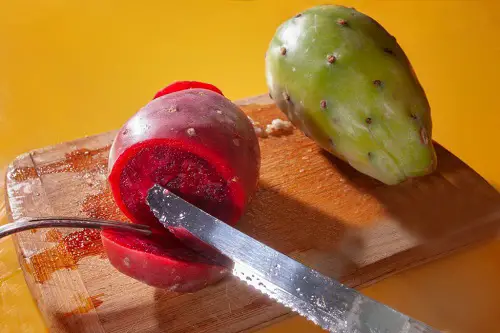

USDA Zones: 8-11
Saguaro is a tree-like cactus; its beautiful nocturnal white blossoms are the state flowers of Arizona. Not just for the flowers, it is noted for its rare red spiny fruits that are edible and sweet.
How to Grow: Saguaros are slow-growing cacti, and you may not be able to grow them for fruits. Check out this article to learn more.
How to eat: Add the juicy fruit to dips or bake them as biscuit fillings. Grill the cactus meat and use it as hot dog fillings
Health Benefits:
- Rich in fiber which makes it good for promoting digestion
- High in B12, and aids the growth of probiotic gut bacteria
Find the Best Care Tips for Growing Pencil Cactus here
5. Dragon Fruit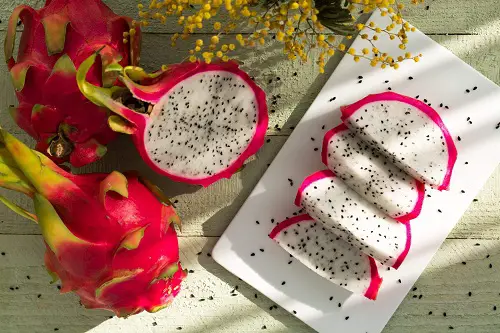
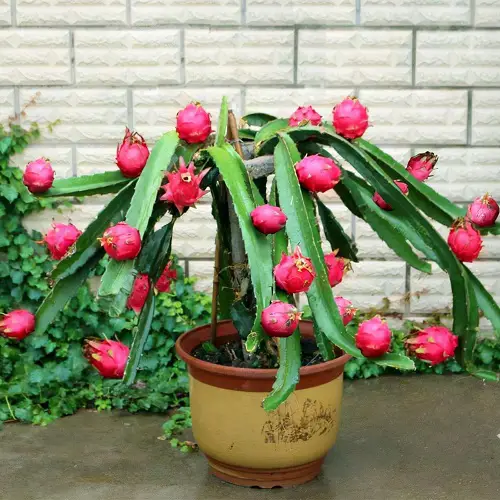
USDA Zones: 8b-11
The dragon fruit is an edible succulent plant. Its night-blooming flowers are just for show and emit a fruity fragrance. The pulpy fruit is full of flavor and a delicious treat for tropical fruit lovers and weight-watchers alike.
How to Grow: Provide the succulent with a warm temperature to help it thrive well. Learn everything about growing dragon fruit here.
How to Eat: Cut the fruit in half lengthwise using a sharp spoon. Scoop out the white, fleshy part. Eat it raw or add it to smoothies or salads for a more pleasant taste.
Health Benefits:
- Rich in antioxidants like polyphenols, anthocyanins, and carotenoids that help counteract free radicals and tone down the severity of chronic ailments
- Aids in weight management and may protect against cancer due to its fiber content
- Promotes the growth of gut bacteria improving gut health
- Boosts low iron levels
Learn about Growing African Milk Tree Cactus here
6. Barrel Cactus
USDA Zones: 9-11
Like the saguaro cactus, the barrel cactus can live for more than 100 years. However, the fruit tastes tart and can be eaten raw or cooked.
How to Grow: Barrel cactus has low watering needs and requires a sunny spot to grow. It can also be grown as a houseplant near a south or west-facing window.
How to Eat: Surprisingly, many parts of the Barrel Cactus are edible—raw or cooked, right from the seeds to the fruit. The latter is sour, but the seeds taste good when roasted. Grind them up and add them to your smoothie.
Health Benefits:
- Enriched with vitamins A, C, E, and antioxidants, it provides relief from inflammation and chronic diseases.
- It promotes tolerance for diabetic complications.
- Enables cognitive awareness and faster recovery from hangovers
7. Purslane 
USDA Zones: 4-11
This low-growing succulent has an invasive spreading habit, making it a challenge to grow indoors; however, its rich reserve of omega-3-fatty acids makes it worth a try.
How to Grow: Purslane can be grown easily from seeds or root cuttings. Learn how to grow it here.
How to Eat: Stems and leaves are edible and can be eaten raw. Their slight sour taste and chewy texture make a good addition to salads. Cook it with spinach for a protein-packed meal, or add the seeds to cakes.
Health Benefits:
- It is rich in Omega-3 Fatty Acids, vitamins E and C.
- Purslane is great for boosting the health of skin and nails.
- Helps in weight management and increases BMR
- Helps in organ detoxification and boosts the immune system
8. Salicornia
USDA Zones: 9-11
This marsh-loving succulent is common on sandy beaches. They have an interesting flavor that is difficult to adapt. Nevertheless, it’s slowly and steadily making its way into grocery stores around the world.
How to Grow: Start seeds on a sunny location and well-drained, sandy soil; water with a solution containing one teaspoon of sea salt in one-pint water.
How to Eat: Seeds and young stems can be eaten raw or stir-fried. Their flavor is similar to asparagus, though slightly fierier. Blanch out leaves to titrate out the sea salt taste.
Health Benefits:
- Salicornia’s protein content is almost equivalent to spinach, making it a great vegetarian protein supplement.
- It is rich in Iron and Vitamin C, which increase iron uptake and resting metabolism.
- The presence of high iodine helps protect from thyroid disorders.


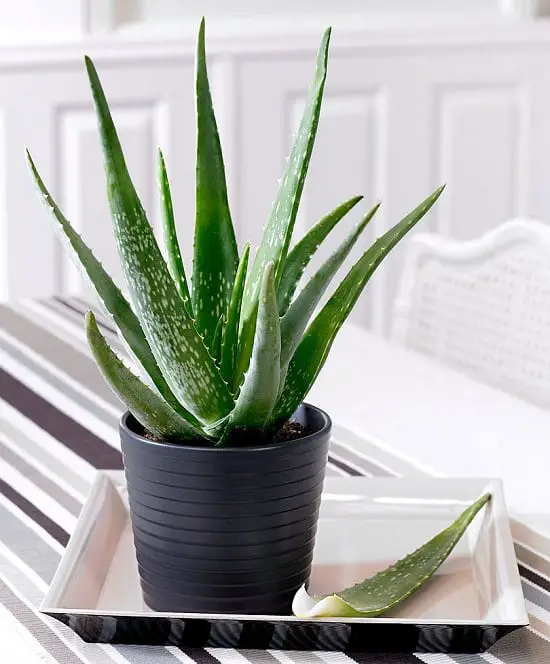


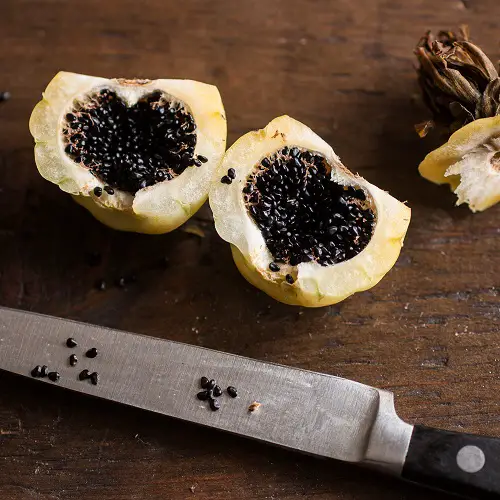
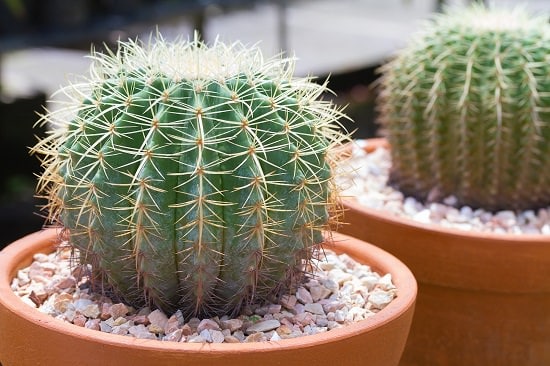


I must say
Awesome!
Awesome!! Thanks!
Hi thanks for the information😊
Your can add pineapple too to the list✌🏽